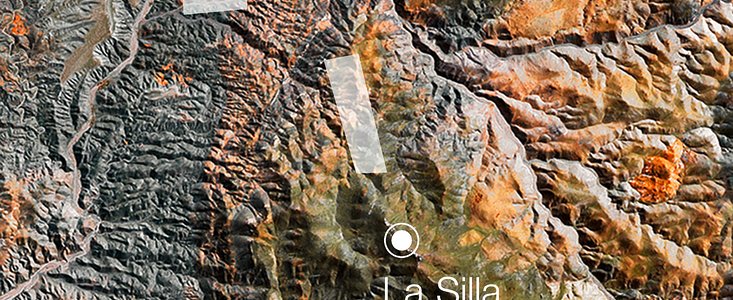Announcement
Solar Farm to be Installed at La Silla
21 July 2014
As part of its green initiatives, ESO has signed an agreement with the Chilean company, Astronomy and Energy (a subsidiary of the Spanish LKS Group), to install a solar farm at the La Silla Observatory. ESO has been working on green solutions for supplying energy to its sites for several years, and these are now coming to fruition. Looking to the future, renewables are considered vital to satisfy energy needs in a sustainable manner.
ESO’s ambitious programme is focused on achieving the highest quality of astronomical research. This requires the design, construction and operation of the most powerful ground-based observing facilities in the world. However, the operations at ESO’s observatories present significant challenges in terms of their energy usage.
Despite the abundance of sunshine at the ESO sites [1], it has not been possible up to now to make efficient use of this natural source of power. Astronomy and Energy will supply a means of effectively exploiting solar energy using crystalline photovoltaic modules (solar panels), which will be installed at La Silla.
The installation will cover an area of more than 100 000 square metres, with the aim of being ready to supply the site by end of the year.
The global landscape for energy has changed considerably over the last 20 years. As energy prices are increasing and vary unpredictably, ESO has been keen to look into ways to control its energy costs and also limit its ecological impact. The organisation has already managed to successfully reduce its power consumption at La Silla, and despite the additions of the VISTA and VST survey telescopes, power use has remained stable over the past few years at the Paranal Observatory, site of the VLT.
The much-improved efficiency of solar cells has meant they have become a viable alternative to exploit solar energy. Solar cells of the latest generation are considered to be very reliable and almost maintenance-free, characteristics that contribute to a high availability of electric power, as required at astronomical observatories.
As ESO looks to the future, it seeks further sustainable energy sources to be compatible across all its sites, including Cerro Armazones — close to Cerro Paranal and the site of the future European Extremely Large Telescope (E-ELT). This goal will be pursued not only by installing primary sources of renewable energy, as at La Silla, but also by realising connections to the Chilean interconnected power systems, where non-conventional renewable energy sources are going to constitute an ever-growing share of the power and energy mixes.
The installation of a solar farm at La Silla is one of a series of initiatives ESO is taking to tackle the environmental impacts of its operations, as can be viewed here. Green energy is strongly supported by the Chilean government, which aims to increase the Chilean green energy share to 25% in 2020, with a possible target of 30% by 2030.
Notes
[1] ESO’s observing facilities provide astronomers with an average of 320 clear nights per year at La Silla and Paranal Observatory; as such the clear daytime provides abundant sunshine for most of the year.
More Information
ESO is the foremost intergovernmental astronomy organisation in Europe and the world’s most productive ground-based astronomical observatory by far. It is supported by 15 countries: Austria, Belgium, Brazil, Czechia, Denmark, France, Finland, Germany, Italy, the Netherlands, Portugal, Spain, Sweden, Switzerland and the United Kingdom. ESO carries out an ambitious programme focused on the design, construction and operation of powerful ground-based observing facilities enabling astronomers to make important scientific discoveries. ESO also plays a leading role in promoting and organising cooperation in astronomical research. ESO operates three unique world-class observing sites in Chile: La Silla, Paranal and Chajnantor. At Paranal, ESO operates the Very Large Telescope, the world’s most advanced visible-light astronomical observatory and two survey telescopes. VISTA works in the infrared and is the world’s largest survey telescope and the VLT Survey Telescope is the largest telescope designed to exclusively survey the skies in visible light. ESO is the European partner of a revolutionary astronomical telescope ALMA, the largest astronomical project in existence. ESO is currently planning the 39-metre European Extremely Large optical/near-infrared Telescope, the E-ELT, which will become “the world’s biggest eye on the sky”.
Links
- Green ESO page
- Renewable Energy for the Paranal Observatory (Messenger article)
- La Silla 5MW (Atacama - Chile) project (LKS Energy and Services)
Contacts
Roberto Tamai
E-ELT Programme Manager
Garching bei München, Germany
Tel: +49 89 3200 6367
Email: rtamai@eso.org
Lars Lindberg Christensen
Head of ESO ePOD
ESO ePOD, Garching, Germany
Tel: +49 89 3200 6761
Cellular: +49 173 3872 621
E-mail: lars@eso.org
About the Announcement
| Id: | ann14057 |


